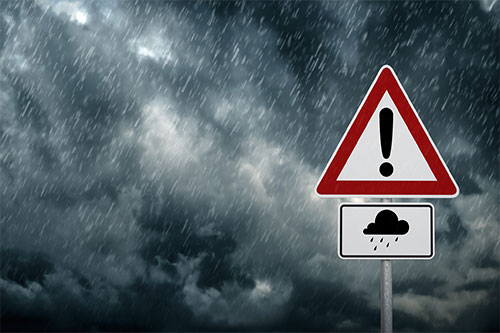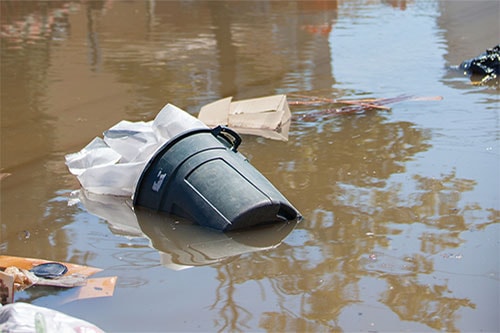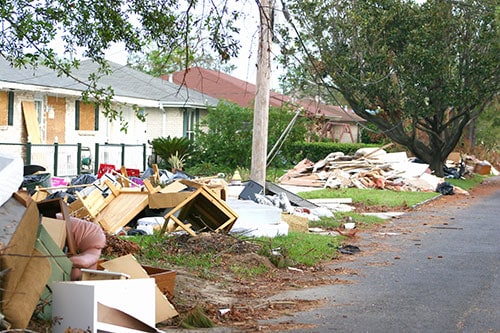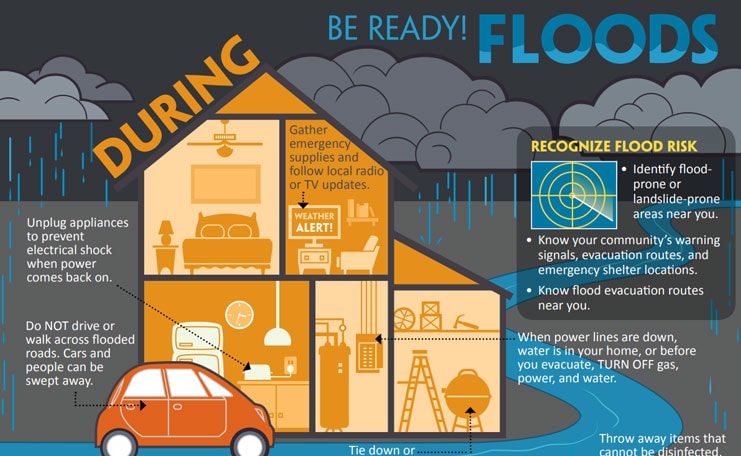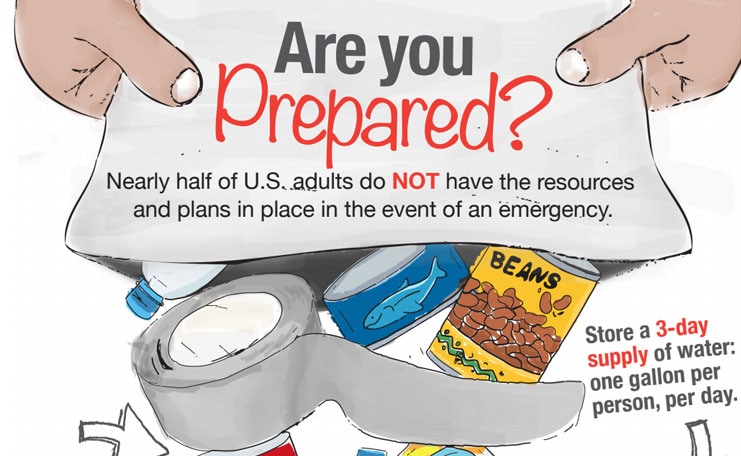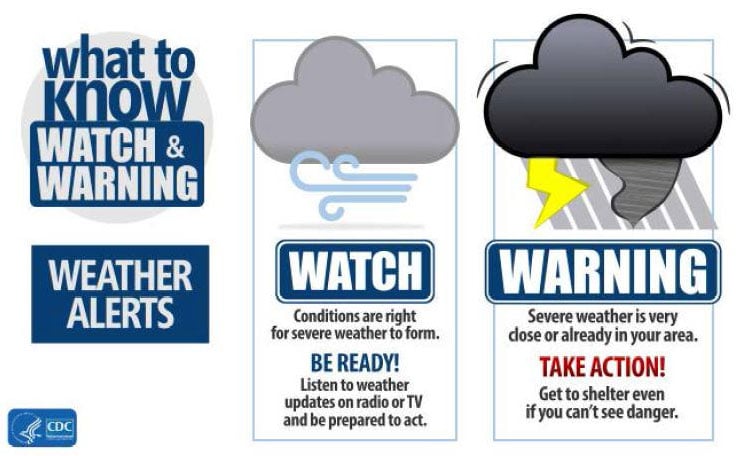Dangers of Flooding and Tips for How You Can Protect Yourself
Learn how to stay safe during and after a flood.
Did you know that the initial damage caused by a flood should not be your only concern? Standing flood waters can also spread infectious diseases, contain chemical hazards, and cause injuries. Each year, flooding causes more deaths than any other hazard related to thunderstorms. The most common flood deaths occur when a vehicle is driven into hazardous flood waters. Fortunately, you can take steps to protect yourself, your family, and your home.
During a Flood Watch or Warning
- Gather emergency supplies.
- Listen to your local radio or television station for updates.
- Fill bathtubs, sinks, gallon jars, or plastic soda bottles so that you will have a supply of clean water.
- Sanitize sinks/tubs first by cleaning them using diluted household laundry bleach. Then rinse and fill with clean water.
- Bring in outdoor possessions (lawn furniture, grills, trash cans) or tie them down securely.
- If you need to evacuate, turn off all utilities at the main power switch and close the main gas valve.
- Evacuate areas that are subject to flooding: low spots, canyons, washes, etc.
- Make sure your immunization records are handy and stored in a waterproof container.
NCEH/ATSDR Office of Communication
(770) 488-0700
envhealthmedia@cdc.gov
After Flooding Has Occurred
- Do not drink flood water, or use it to wash dishes, brush teeth, or wash/prepare food. Drink clean, safe water.
- If you evacuated: return to your home only after local authorities have said it is safe to do so.
- Listen to water advisories from local authorities to find out if your water is safe for drinking and bathing.
- During a water advisory, use only bottled, boiled, or treated water for drinking, cooking, etc.
- Avoid driving through flooded areas and standing water. As little as six inches of water can cause you to lose control of your vehicle.
- Prevent carbon monoxide (CO) poisoning. Use generators and pressure washers outside, at least 20 feet from any doors, windows and vents.
After you return home, if you find that your home was flooded, practice safe cleaning.
- When in doubt, throw it out! Throw away any food and bottled water that comes/may have come in contact with flood water or that was not refrigerated for more than two hours.
- Remove and throw out drywall and insulation that was contaminated with flood water or sewage.
- Do not use items that cannot be washed and cleaned with bleach: mattresses, pillows, carpeting, carpet padding, and stuffed toys.
- Use diluted household laundry bleach to clean dirt and mold off of items like floors, stoves, sinks, countertops, plates, and tools.
- Dilute bleach to the proper concentration according to these charts.
Homeowners may want to temporarily store items outside of the home until insurance claims can be filed. See recommendations by the Federal Emergency Management Agency (FEMA)external icon.
Get more information about staying safe during a flood.
